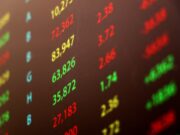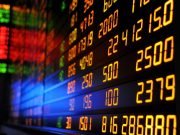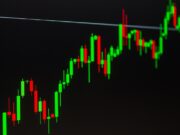Enthusiasm around a strong economic reopening helped push stocks higher in early trading. One sentiment boosting factor was positive news from the CDC. Daily infection levels are at their lowest since March 2020 and more than 50% of the U.S. population has had at least one dose of a vaccine. The major indices were green to begin the first trading session of June.
Investor confidence is up and we may see another all-time high for the S&P 500 in the near future. But some analysts warn, the tides could turn along with what may be a pivotal, mid-month Fed meeting.
Our trade alert for today features a tactic used by active investors to hedge their portfolios and even to turn a quick profit if things get ugly. It’s an important tool to have in your tool kit for the next time you think a downturn could be coming.
The main risk of traditional short-selling is that while profit is capped (a stock can only fall to zero), risk is theoretically unlimited. Of course, other tactics can be used to cover a position at any time, but with a short-selling position, inventors are at risk of receiving margin calls on their trading account if their short position moves against them. But there is another way that you can take a bearish position. Read on to learn more.
Inverse or “short” ETFs are another option that allow you to profit when a certain investment class declines in value. Some investors use inverse ETFs to profit from market declines while others use them to hedge their portfolios against falling prices.
Over short periods of time you can expect that the inverse ETF will perform “the opposite” of the index, but over longer periods of time a disconnect may develop. Inverse ETFs will decline as an asset appreciates over time. For that reason, inverse ETFs typically are not seen as good long-term investments. Furthermore, frequent trading often leads to an increase in fund expenses and some inverse ETFs have expense ratios of 1% or more.
When approached correctly, inverse ETFs can be excellent day-trading candidates and highly effective short-term hedging tools. There are several inverse ETFs that can be used to profit from declines in broad market indexes, such as the Russell 2000 or the Nasdaq 100. Also, there are inverse ETFs that focus on specific sectors, such as financials, energy, or consumer staples.
With nearly $4 billion in assets, the ProShares Short S&P 500 (SH) is the largest inverse fund by value. Commonly used by investors as a hedging vehicle, the fund strives to deliver the inverse performance of the S&P 500 (SPX). If you’re concerned about the stock market falling, then this fund that moves the opposite direction of the largest 500 U.S. corporations is the simplest way to protect yourself.
It’s important to note that SH is designed to deliver inverse results over a single trading session, with exposure resetting on a monthly basis. Investors considering this ETF should understand how that nuance impacts the risk/return profile, and realize the potential for “return erosion” in volatile markets. SH should definitely not be found in a long-term, buy-and-hold portfolio. The fund comes along with an expense ratio of 0.9%.
Where to invest $1,000 right now...
Before you consider buying ProShares Short S&P 500, you'll want to see this.
Investing legend, Keith Kohl just revealed his #1 stock for 2022...
And it's not ProShares Short S&P 500.
Jeff Bezos, Peter Thiel, and the Rockefellers are betting a colossal nine figures on this tiny company that trades publicly for $5.
Keith say’s he thinks investors will be able to turn a small $50 stake into $150,000.
Find that to be extraordinary?
Click here to watch his presentation, and decide for yourself...
But you have to act now, because a catalyst coming in a few weeks is set to take this company mainstream... And by then, it could be too late.
Click here to find out the name and ticker of Keith's #1 pick...











